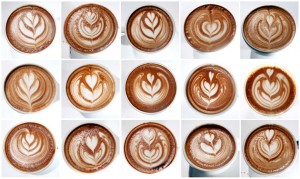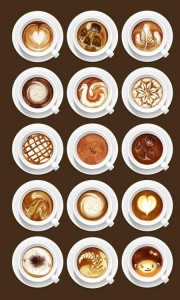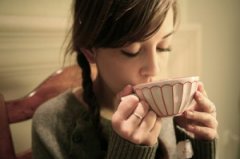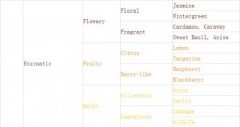Italian coffee fancy coffee and coffee classification
Many friends who consume coffee like to drink fancy coffee, but most people who consume fancy coffee do not know what fancy coffee is and do not have a clear understanding of the type of coffee.
First of all, we should know that coffee making methods can be divided into three categories. The first category is the most primitive individual coffee, which is also preferred by professionals and middle-aged people who understand coffee. The second type is fancy coffee, which is made by adding two or more kinds of coffee and accessories on the basis of pure coffee. it is a kind of exquisite work of art with excellent color, aroma, taste and shape. it is a kind of coffee preferred by most young consumers nowadays. The third category is Italian coffee, which is simply processed by the Italian after using the Espresso made by the coffee machine, and it is also the coffee that Italians prefer. However, there is a small branch of the Italian coffee, that is, Starbucks coffee. Starbucks coffee is the coffee obtained after making some minor changes to the Italian coffee methods and ingredients, and its taste is more suitable for Americans. Coffee, which is also preferred by Americans, is Italian in the final analysis, so it does not give a separate classification.

Through the introduction of Chongqing Brista Coffee West Point training School, do you also have a certain understanding of coffee? next, we will take you to learn more about fancy coffee: fancy coffee can be divided into two categories (alcoholic and non-alcoholic). In the WBC final, contestants are required to make non-alcoholic fancy creative coffee, which can be innovated according to their own cognition and understanding of coffee. Play at will to create unique coffee, so fancy coffee is different from traditional single coffee in terms of appearance and drinking method.
At present, fancy coffee accounts for more than 80% of Chongqing's coffee consumption, while individual coffee only accounts for a small part of the coffee market, but the opposite is true in developed coastal cities. For example, Beijing, Shanghai, Fujian, Guangdong, Hong Kong, Taiwan and other places are dominated by individual coffee sales, consumers are more enthusiastic about individual coffee consumption, and have higher awareness and understanding of coffee.


Important Notice :
前街咖啡 FrontStreet Coffee has moved to new addredd:
FrontStreet Coffee Address: 315,Donghua East Road,GuangZhou
Tel:020 38364473
- Prev

Coffee healthy drinking coffee can remove bad breath
What about bad breath? Chewing gum can only solve the problem of bad breath at 00:00, long-term consumption can do great harm to the stomach, and now there is a new study in Israel that coffee, which we often drink in our lives, contains substances to inhibit bad breath. A new study by Israeli scientists has found that coffee contains substances that inhibit bad breath, which may be used as mouthwash and breath fresheners in the future.
- Next

Boutique coffee information SCAA coffee cup tester
The coffee cup tester must memorize the flavor wheel and have a clear understanding of each flavor. Coffee Taste American Fine Coffee Association (SCAA) Evaluation of Coffee Taste one is coffee flavor evaluation round and the other is coffee flavor defect theory. The following table is a list of coffee flavor styles based on coffee flavor evaluation wheel. SCAA cup test table:
Related
- Beginners will see the "Coffee pull flower" guide!
- What is the difference between ice blog purified milk and ordinary milk coffee?
- Why is the Philippines the largest producer of crops in Liberia?
- For coffee extraction, should the fine powder be retained?
- How does extracted espresso fill pressed powder? How much strength does it take to press the powder?
- How to make jasmine cold extract coffee? Is the jasmine + latte good?
- Will this little toy really make the coffee taste better? How does Lily Drip affect coffee extraction?
- Will the action of slapping the filter cup also affect coffee extraction?
- What's the difference between powder-to-water ratio and powder-to-liquid ratio?
- What is the Ethiopian local species? What does it have to do with Heirloom native species?

